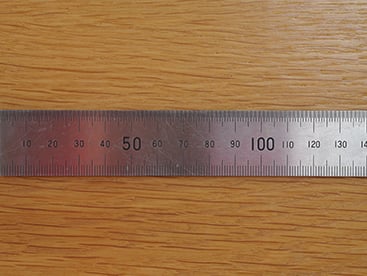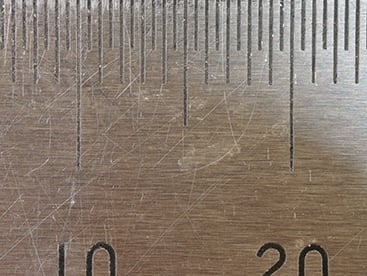Olympus M.Zuiko Digital 45mm 1:1.8 review
-
-
Written by Gordon Laing
Quality
To evaluate the real-life performance of the Olympus M Zuiko Digital 45mm f1.8 lens, I shot this landscape scene at every aperture setting using a Panasonic Lumix GX1 mounted on a tripod. The GX1 was set to its base sensitivity of 160 ISO and the lens focused on the center of the composition using magnified Live View assistance. Most of the scene is effectively at infinity so even at f1.8 the depth of field covers the range of distances from top to bottom. The corner and center crops shown below were taken from the areas marked with the red squares, right, and presented at 100%. I also shot this scene moments later using the Panasonic Leica 45mm f2.8 lens for a direct comparison and you can find this on the next page.
I shot the scene using the GX1’s RAW mode and processed the files in Adobe Camera RAW (ACR) via Photoshop using the following settings: Sharpening at 70 / 0.5 / 36 / 10, Luminance and Colour Noise Reduction both set to zero, and the Process to 2012 with the Adobe Standard profile. The high degree of sharpening with a small radius enhances the finest details without causing undesirable artefacts.
All lens corrections were disabled, so there’s no software compensation for vignetting, geometric distortion or chromatic aberrations. Normally this would allow us to evaluate the uncorrected optical performance of the lens alone, but with Micro Four Thirds lenses there are additional corrections stored as profiles within the firmware; these are automatically applied to JPEGs in-camera, and also by most RAW converters including ACR when opening the RAW file. You can’t turn them off.
As such it’s often hard to see exactly what’s going on behind the scenes of Micro Four Thirds lenses without using an obscure RAW converter which ignores the profiles, so instead of trying to chase the pure optical performance of the lens for the sake of it, I thought it would be much more useful to simply show how it will perform in normal use. That said, as an Olympus lens on a Panasonic body, I believe only the geometric distortion is being corrected by the RAW processor here; I understand any chromatic aberration profiling is lost when fitting Olympus lenses on Panasonic bodies and vice versa, and that vignetting is only corrected in-camera on JPEGs. The bottom line then is I believe chromatic aberrations and vignetting are not being corrected below, only geometric distortion.
Phew, now that’s out of the way I can start looking at the results, and thankfully it’s a very straightforward and positive story. The Olympus M.Zuiko Digital 45mm f1.8 may be small, light and fairly affordable, but delivers industry-leading performance across the frame. All but the furthest corners of the frame look pretty good even with the aperture wide open, and become crisp at f2.8, with the best results arriving at f4. The extreme corners are a little soft at f1.8, but improve a great deal by f2.8, and again look fantastic at f4. Between f5.6 and f8, the image begins to soften and lose contrast due to diffraction, but still looks very good. You’d probably want to avoid anything smaller though as at f11, the image is looking noticeably softer than the peak. At any aperture there’s virtually no evidence of any chromatic aberrations and only minor vignetting when wide open, which disappears almost the instant you start closing the lens.
So with the aperture wide open for the shallowest depth of field, your main subject will still be nice and sharp, and any minor issues in the extreme corners will go unnoticed. But if you can close the lens to f4, you’ll enjoy sharp, high contrast and detailed images across the entire frame, including right up into the far corners. This makes the Olympus 45mm f1.8 a very flexible option, as while its specification suggests it’s primarily a portrait lens, it’s also surprisingly good for architecture and landscape shots which demand fine detail across the entire frame. This is where it differs from many ‘portrait’ lenses of a similar effective focal length which often hide any poor corner performance in the shallow depth of field, and frequently disappoint when used outside of a portrait environment.
Not so with the Olympus 45mm f1.8, which delivers one of the most uniformly sharp performances of any lens I’ve tested from any system. Indeed while I originally got hold of one for portraits, it quickly became one of my favourite lenses to use around cities for capturing fine details at day and night.
As such, I’d already place the Olympus 45mm f1.8 on the no-brainer list for owners of Micro Four Thids bodies looking for a short telephoto lens, but there is of course a pricier alternative to weigh-up: the Panasonic Leica 45mm f2.8 which may not be optically as bright, but as a dedicated macro lens can focus much, much closer. I’ll be examining the macro performance and potential depth of field on separate pages, but for now want to see how their sharpness across the frame compares for the same landscape scene shot focused at infinity. See how they measure-up in my Olympus 45mm f1.8 vs Panasonic 45mm f2.8 comparison.
Olympus M Zuiko Digital 45mm f1.8 corner sharpness | Olympus M Zuiko Digital 45mm f1.8 center sharpness |
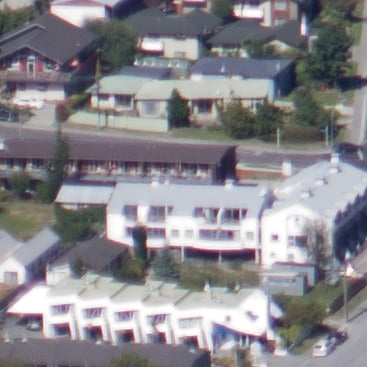 |  |
Olympus M Zuiko Digital 45mm f1.8 corner crop at f1.8 | Olympus M Zuiko Digital 45mm f1.8 center crop at f1.8 |
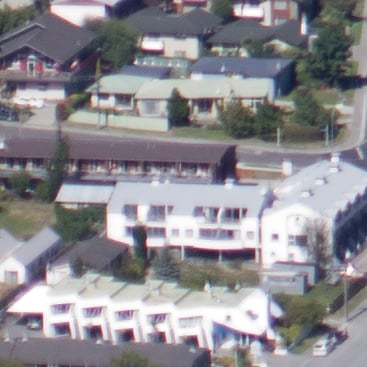 |  |
Olympus M Zuiko Digital 45mm f1.8 corner crop at f2 | Olympus M Zuiko Digital 45mm f1.8 center crop at f2 |
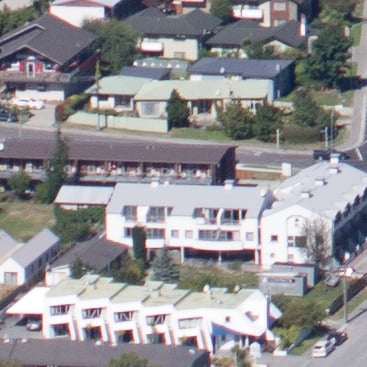 |  |
Olympus M Zuiko Digital 45mm f1.8 corner crop at f2.8 | Olympus M Zuiko Digital 45mm f1.8 center crop at f2.8 |
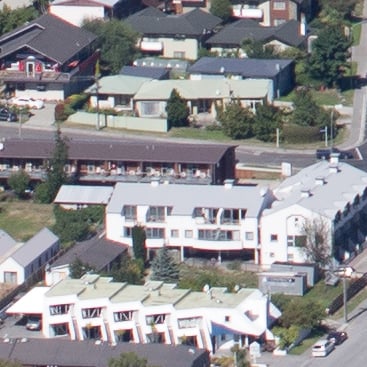 |  |
Olympus M Zuiko Digital 45mm f1.8 corner crop at f4 | Olympus M Zuiko Digital 45mm f1.8 center crop at f4 |
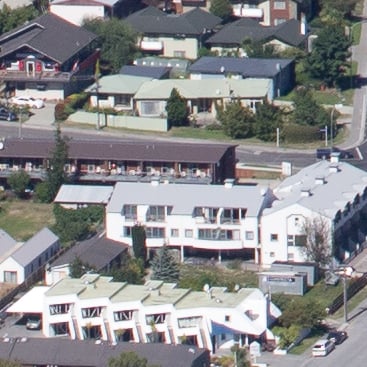 |  |
Olympus M Zuiko Digital 45mm f1.8 corner crop at f5.6 | Olympus M Zuiko Digital 45mm f1.8 center crop at f5.6 |
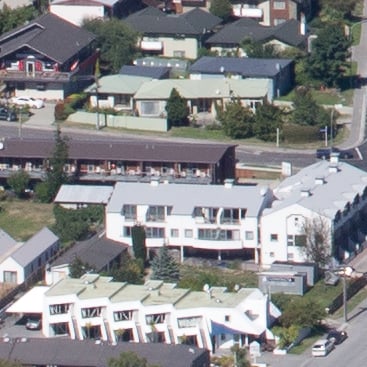 |  |
Olympus M Zuiko Digital 45mm f1.8 corner crop at f8 | Olympus M Zuiko Digital 45mm f1.8 center crop at f8 |
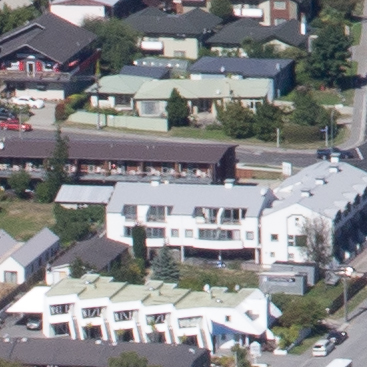 |  |
Olympus M Zuiko Digital 45mm f1.8 corner crop at f11 | Olympus M Zuiko Digital 45mm f1.8 center crop at f11 |
Olympus M Zuiko Digital 45mm f1.8 vs Panasonic Leica 45mm f2.8
To compare the real-life performance between the Olympus M Zuiko Digital 45mm f1.8 and Panasonic Leica 45mm f2.8 lenses, I shot this landscape scene with both at every aperture setting using a Panasonic Lumix GX1 mounted on a tripod.
The GX1 was set to its base sensitivity of 160 ISO and the lenses were focused on the center of the composition using magnified Live View assistance. Most of the scene is effectively at infinity so even at f1.8 the depth of field covers the range of distances from top to bottom. I also have a seperate page illustrating the depth of field and bokeh of this lens, along with another demonstrating its macro performance.
All lens corrections were disabled, so there’s no software compensation for vignetting, geometric distortion or chromatic aberrations. Normally this would allow us to evaluate the uncorrected optical performance of the lenses alone, but with Micro Four Thirds lenses there are additional corrections stored as profiles within the firmware; these are automatically applied to JPEGs in-camera, and also by most RAW converters including ACR when opening the RAW file. You can’t turn them off.As before, I shot the scene using the GX1’s RAW mode and processed the files in Adobe Camera RAW (ACR) via Photoshop using the following settings: Sharpening at 70 / 0.5 / 36 / 10, Luminance and Colour Noise Reduction both set to zero, and the Process to 2012 with the Adobe Standard profile. The high degree of sharpening with a small radius enhances the finest details without causing undesirable artefacts.
As such it’s often hard to see exactly what’s going on behind the scenes of Micro Four Thirds lenses without using an obscure RAW converter which ignores the profiles, so instead of trying to chase the pure optical performance of the lenses for the sake of it, I thought it would be much more useful to simply show how they will compare in normal use. That said, as I understand it any chromatic aberration profiling is lost when fitting Olympus lenses on Panasonic bodies and vice versa, and that vignetting is only corrected in-camera on JPEGs. So in the results below the geometry is corrected on both lenses, but chromatic aberrations are only corrected on the Panasonic. Meanwhile, there’s no correction of vignetting on either lens below.
This is a very interesting comparison as both lenses may share the same focal length, but physically the Panasonic is considerably larger and heavier, not to mention more expensive. You’d think all that glass would deliver superior all-round performance, but the results tell a different story.
I’ll start with the corner performance in the first table below. With a brighter focal ratio, the Olympus 45mm f1.8 kicks-off the comparison with a result that’s a little soft in the extreme corners at f1.8 and f2, but which sharpens up considerably at f2.8 and becomes completely crisp at f4 across the frame. The f5.6 result also looks good, although at f8 diffraction is visibly kicking-in with a progressively softer and lower contrast result as the aperture is closed.
The Panasonic 45mm joins the comparison at f2.8 with a very respectable result in the corner that’s a little crisper than the Olympus at the same aperture – although note the higher perceived contrast from the Panasonic result here is partly attributable to greater vignetting causing the corners to darken at f2.8. But even with that taken into consideration, the Panasonic still enjoys a small lead at f2.8 in the corners.
Interestingly while the vignetting on the Panasonic 45mm is essentially eliminated at f4, the sharpness doesn’t visibly improve from the f2.8 sample; likewise for the f5.6 sample which again looks very similar to the two before it. In contrast though, the Olympus 45mm enjoys a visible boost in sharpness and contrast when closing from f2.8 to f4 which is maintained at f5.6, allowing it to deliver crisper results in the corners than the Panasonic across this range.
Like the Olympus, the Panasonic visibly deteriorates at f8 with noticeable softness and reduced contrast, which due to diffraction becomes progressively worse at smaller apertures. But interestingly the effect is much more pronounced than on the Olympus. For example the Olympus 45mm is just about acceptable at f8, whereas you’d really want to avoid using f8 on the Panasonic where possible.
Moving onto the crops from the center, the comparison becomes much closer. The Olympus once again kicks-off the comparison at f1.8 with a sharp but slightly lower contrast image which improves greatly at f2.8 and becomes slightly better at f4.
The Panasonic starts at f2.8 with a result that looks very strong in the center with only a very minor loss of contrast compared to the quality peak at f4.
In the center I’d say the Olympus enjoys a fractional edge at f2.8 compared to the Panasonic, but there’s virtually nothing in it, and between f4 and f5.6 both lenses are essentially neck in neck – again for the center of the image. Pixel peepers may notice a minor boost in contrast and ultimate crispness from the Olympus within this range, but nothing to really differentiate them.
At f8, diffraction kicks-in for both lenses with a steady reduction in contrast and sharpness as the aperture is closed further, although again I’d say the Panasonic deteriorates a fraction quicker.
So in terms of performance in the middle of the frame, both lenses are pretty close and deliver superb detail, especially if you can close them to f4. Even wide open, the details are sharp in the middle. Look to the extreme corners though and the Olympus enjoys a visible edge at matching apertures. Once again if you close it to f4, you’ll have an image that’s uniformly sharp and detailed right up to the edges and corners. It’s a remarkably good performance.
What makes this all the more impressive is the Olympus lens is considerably smaller, lighter and cheaper than the Panasonic too, while additionally boasting an aperture that’s just over a stop brighter. Where the Panasonic scores is with optical stabilization (useful for Panasonic bodies but not Olympus ones which already have it built-in) and true 1:1 macro performance which I’ll compare on my Olympus 45mm f1.8 macro page, but if you’re not bothered about shooting extreme close-ups or having optical stabilization and just want a very sharp short telephoto lens, the Olympus 45mm f1.8 will give you superb results in a small, light and affordable package.
But what difference does f1.8 make to f2.8 when it comes to depth of field and blurring the backgrounds on portrait and macro shots? Find out in my Olympus 45mm f1.8 bokeh results page.
Olympus M Zuiko Digital 45mm f1.8 corner sharpness | Panasonic Leica 45mm f2.8 corner sharpness | |
 | ||
Olympus M Zuiko Digital 45mm f1.8 corner crop at f1.8 | Panasonic Leica 45mm f2.8 corner crop. f1.8 not available | |
 | ||
Olympus M Zuiko Digital 45mm f1.8 corner crop at f2 | Panasonic Leica 45mm f2.8 corner crop. f2 not available | |
 | 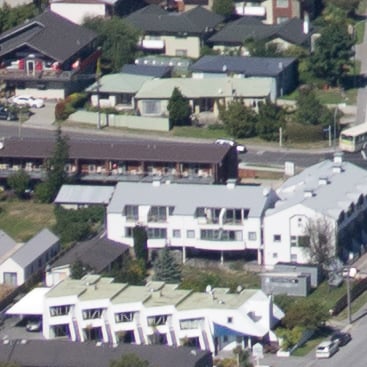 | |
Olympus M Zuiko Digital 45mm f1.8 corner crop at f2.8 | Panasonic Leica 45mm f2.8 corner crop at f2.8 | |
 |  | |
Olympus M Zuiko Digital 45mm f1.8 corner crop at f4 | Panasonic Leica 45mm f2.8 corner crop at f4 | |
 | 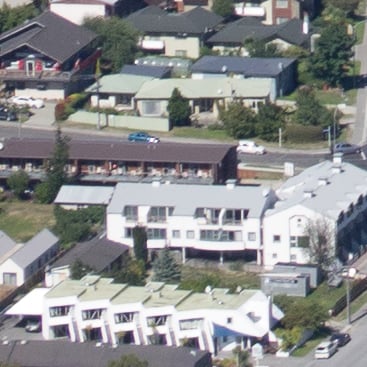 | |
Olympus M Zuiko Digital 45mm f1.8 corner crop at f5.6 | Panasonic Leica 45mm f2.8 corner crop at f5.6 | |
 | 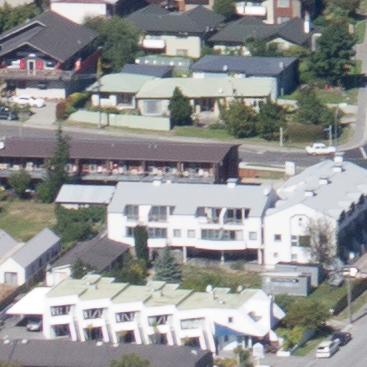 | |
Olympus M Zuiko Digital 45mm f1.8 corner crop at f8 | Panasonic Leica 45mm f2.8 corner crop at f8 | |
 |  | |
Olympus M Zuiko Digital 45mm f1.8 corner crop at f11 | Panasonic Leica 45mm f2.8 corner crop at f11 |
Olympus 45mm f1.8 vs Panasonic 45mm f2.8 center sharpness
Olympus M Zuiko Digital 45mm f1.8 center sharpness | Panasonic Leica 45mm f2.8 center sharpness | |
 | ||
Olympus M Zuiko Digital 45mm f1.8 center crop at f1.8 | Panasonic Leica 45mm f2.8 center crop. f1.8 not available | |
 | ||
Olympus M Zuiko Digital 45mm f1.8 center crop at f2 | Panasonic Leica 45mm f2.8 center crop. f2 not available | |
 |  | |
Olympus M Zuiko Digital 45mm f1.8 center crop at f2.8 | Panasonic Leica 45mm f2.8 center crop at f2.8 | |
 |  | |
Olympus M Zuiko Digital 45mm f1.8 center crop at f4 | Panasonic Leica 45mm f2.8 center crop at f4 | |
 |  | |
Olympus M Zuiko Digital 45mm f1.8 center crop at f5.6 | Panasonic Leica 45mm f2.8 center crop at f5.6 | |
 |  | |
Olympus M Zuiko Digital 45mm f1.8 center crop at f8 | Panasonic Leica 45mm f2.8 center crop at f8 | |
 |  | |
Olympus M Zuiko Digital 45mm f1.8 center crop at f11 | Panasonic Leica 45mm f2.8 center crop at f11 |
Olympus M Zuiko Digital 45mm f1.8 bokeh
To compare the potential depth-of-field and bokeh effects of the Olympus M Zuiko Digital 45mm f1.8 and Panasonic Leica 45mm f2.8 lenses, I shot two compositions: the first was a traditional head-and-shoulders portrait, and the second was a macro shot taken at the closest focusing distance of the Olympus lens.
In both cases, each lens was fitted to a Panasonic GX1 body, mounted on a tripod.
I’ll start with the portrait shot, a typical head-and-shoulders composition taken from a distance of about 2m with the background mountains about 6km away. This represents pretty much ideal conditions for a portrait with a shallow depth of field and below you can see how the Olympus 45mm f1.8 and Panasonic 45mm 2.8 lenses handle it with their maximum apertures of f1.8 and f2.8 respectively.
Olympus M Zuiko Digital 45mm f1.8 bokeh | Panasonic Leica 45mm f2.8 bokeh | |
 |  | |
Olympus M Zuiko Digital 45mm f1.8 depth of field at f1.8 | Panasonic Leica 45mm f2.8 depth of field at f2.8 |
| At first glance the two shots look quite similar, maybe disappointingly so if you expected the Olympus to deliver a significantly shallower depth of field. But look again and you’ll see the background details on the Panasonic 45mm sample are noticeably better-defined, from the bushes a few hundred meters away to the hills and mountain ridge beyond. There’s no doubt the background on the Olympus 45mm f1.8 sample is softer, less defined and ultimately less distracting, the characteristics most people desire from a portrait shot. |
If you’re used to shooting with larger formats though, even if it’s just APS-C, you may be disappointed by the comparatively large depth of field on these two samples, since both are described as portrait lenses. Fit a 50mm f1.8 to an APS-C camera or an 85mm f1.8 to a full-frame body and you’ll enjoy a much shallower depth of field at the same subject and background distances when the aperture is wide open, so what’s going on here?
The explanation is the sensor size impacts both the effective field of view and the effective depth of field. In the case of Micro Four Thirds, the sensor effectively reduces the field of view by two times, making a 45mm lens act like a 90mm on a full-frame body. But it also makes the depth of field act like a full-frame aperture that’s two stops slower. So when comparing these lenses to a full-frame system, their effective focal lengths may both be 90mm, but their effective apertures become f3.6 on the Olympus and f5.6 on the Panasonic. No wonder the background isn’t anywhere near as blurred as an 85mm f1.8 on a full-frame body.
For an effective full-frame aperture of f1.8 on Micro Four Thirds, you’d need an actual aperture of f0.9. While such lenses (or close) do exist, they’re not exactly cheap, so anyone wanting a shallower depth of field from Micro Four Thirds without getting closer to their subject will need to increase their focal length instead – the Olympus 75mm f1.8 is the ideal solution for a very shallow depth of field, although with an equivalent focal length of 150mm, you may feel a bit detached from the subject.
Just for reference, I’ve also included two shots taken with the Panasonic Leica 25mm f1.4 lens below, both at the maximum aperture of f1.4. The first, below left, was taken at the same distance as the two above, so the subject is understandably half the size, but there’s still some blurring in the background.
Panasonic Leica 25mm f1.4 bokeh | Panasonic Leica 25mm f1.4 bokeh | |
 |  | |
Panasonic Leica 25mm f1.4 depth of field at f1.4 Taken from same distance as 45mm samples above | Panasonic Leica 25mm f1.4 depth of field at f1.4 Taken from closer distance to match subject size in 45mm samples |
| Move closer though and you’ll see the depth of field reduce, so in the second sample above right I’ve attempted to match the subject position and size of the 45mm shots by roughly halving my distance. I’m a little too close to the subject now and distortion from the wider focal length is delivering a less flattering result than the longer lenses, but it does illustrate that this shorter lens can still be very useful for portrait work. I actually find it preferable for kids who won’t keep sufficiently still for longer focal lengths and who don’t seem to mind the closer shooting proximity. |
As illustrated above, another way to achieve a more blurred background is simply to get closer to your subject. There’s obviously a limit to how close you can get to a person – although the smaller size of kids gives more scope than adults – but if you can get really close in a macro situation, then you can really throw the background out of focus.
To illustrate this in action I lined up a composition of a flower at a distance of half a meter. This is the closest focusing distance of the Olympus lens, although as a dedicated macro model, the Panasonic can focus much, much closer. I’ll compare their closest focusing distances on the next page, but here wanted to see how their depth of field compared at the same distance of 0.5 meters.
Olympus M Zuiko Digital 45mm f1.8 bokeh | Panasonic Leica 45mm f2.8 bokeh | |
Olympus M Zuiko Digital 45mm f1.8 depth of field at f1.8 Click image for original at Flickr | Panasonic Leica 45mm f2.8 depth of field at f2.8 Click image for original at Flickr |
|
Olympus M Zuiko Digital 45mm f1.8 macro
To compare the macro performance of the Olympus M Zuiko Digital 45mm f1.8 and Panasonic Leica 45mm f2.8 lenses, I photographed a ruler from their respective closest focusing distances.
In both cases, each lens was fitted to a Panasonic GX1 body, mounted on a tripod. You can see other results for both lenses from the contents index on the right.
The Olympus M Zuiko Digital 45mm f1.8 lens has a closest focusing distance of 0.5m which, according to Olympus, allows it to deliver a maximum image magnification of 0.11x. Point it at a ruler at its closest focusing distance and you’ll capture a field of view measuring 14cm across the width of the frame; you can see this in the image below left. Since the Micro Four Thirds standard employs a sensor measuring 17.3x13mm this results in a magnification of 0.12x in my tests, essentially confirming the official specs.
To put it bluntly, the Olympus 45mm f1.8 ain’t a macro lens. To see what’s possible with a true macro lens, you only need to glance at the image below right, taken with the Panasonic 45mm f2.8 at its closest focusing distance of 15cm. Here the Panasonic lens captures an image measuring just over 17mm wide, which confirms its claim of delivering 1:1 magnification, or actual size reproduction – the proper credentials of a dedicated macro lens.
Olympus M Zuiko Digital 45mm f1.8 macro | Panasonic Leica 45mm f2.8 macro | |
Olympus M Zuiko Digital 45mm f1.8 at closest focusing distance Click image for original at Flickr | Panasonic Leica 45mm f2.8 at closest focusing distance Click image for original at Flickr |
|





